Sometimes I run across the assertion James Churchward was a ‘Theosophist’ and/or his theories bear a great resemblance to their works. It is very possible Churchward met and discussed metaphysical topics with leading adherents as discussed in his biography, My Friend Churchey and His Sunken Island of Mu by Percy Tate Griffith. However, just because discussions of metaphysical topics engaged part of his time does not imply his adherence to their tenets.
The underlying belief in a lost ancient advanced civilization may appear to be a link, however the same correlation could be made with Ignatius Donnelly or probably more accurately with Augustus Le Plongeon. It is no secret James Churchward knew Le Plongeon and much of the material concerning Mu is directly attributable to Le Plongeon. That Theosophists quoted Le Plongeon is not an indication he was in their camp; quotes from Donnelly found their way into their works as well, and he was not a Theosophist.
Another similarity between Blavatsky and Churchward’s works is the discovery of a text nobody else had/has ever seen. The Stanzas of Dzyan, an Atlantean record found in Tibet was Blavatsky’s contribution. Churchward cited the Naacal Tablets, the combined wisdom and knowledge of the Naacal Brotherhood of Mu from ancient times, although he never found a complete set. Again, although this is a similarity, there are other examples of ancient texts only one person sees, such as Paul Schliemann’s Lhasa Record, the supposed Chaldean document found in Tibet.
Here are some further reasons leading me to believe James Churchward was not a Theosophist:
1. There is no ‘Lemuria’ in James Churchward’s writing. If you choose to equate the Theosophical concept of Lemuria with Mu, there is no match, unless you count both sunk. Churchward considered Mu to be the biblical ‘Garden of Eden’ where the human race began. Mu was where civilization began and colonized/spread across the Earth. To Theosophists, Lemuria was the place where the not-yet-modern human 3rd Root Race appeared. After they discovered sex, their off-spring migrated to Atlantis and their continent ‘passed beneath the waves.’
2. Atlantis was a colony of Mu; Blavatsky’s Atlantis was the homeland of the 4th root race. Present day ‘Aryan humans’ are the survivors of the sinking of Atlantis.
3. Churchward was a vehement critic of evolution; he wrote all humans came from Mu and colonized the Earth. He also wrote a long explanation why human evolution was impossible in the Cosmic Forces of Mu (given his knowledge of the cosmic forces.) Theosophy teaches there are to be seven root races with seven stages of evolution. According to them, the highest human form today is the ‘Aryan’ or the 5th root race. Everyone else, a descendant of the lower root races indicating the racial mores of the 19th century and the influence of Ernst Haeckle and his ‘anthropoid apes.’
4. Theosophists reference materials obtained through ‘channeling’ with Ascended Masters and the Stanzas of Dzyan from Atlantis. Churchward does not reference the ‘Stanzas,’ nor does he include a word about Ascended Masters or channeling.
These reasons indicate crucial differences in their respective philosophies. Some might say irreconcilable differences.
That Churchward denigrated the ‘Dzyan‘ was the same tactic he used on all his critics or people he thought might disagree. Whether pronouncing an accepted scientific theory to be the wrong interpretation, ad hominin attacks, or leveraging off the notoriety of one element to highlight the greater antiquity and importance of his discovery, he had his opinions. Essentially, he uses this same approach for the Christian bible. Just as the following passage pronounces the Dzyan to be a bad translation from the Sacred Inspired Writings of Mu (aka Naacal Tablets,) so it is for Ezra’s faulty translation of the bible (see Lost Continent of Mu Motherland of Men page 6.)
The Dzyan is a Hindu book written in Sanskrit about 1500 B.C. The book is accredited to the Brahmins and it certainly looks like their work. In this book the Naacal copies of the Sacred Inspired Writings of the Motherland have been taken as a base to work on. The Dzyan is the most incomplete and the most ambiguous ancient work I have ever come across. It takes the Sacred Writings and with evident deliberateness misinterprets and adds to them. Misstatements permeate the whole text. The book reads as if it had been designed to breed distrust, fear and superstition in the people. There is very little symbolism in it. It is, rather, filled up with comparisons, unphilosophical and absolutely one-sided. No point is proven. Most sentences read like the headline of a chapter, leaving the chapter unwritten. There is no continuity of subjects, which leaves the whole thing indefinite. If the writer was only committing stray thoughts to writing, he admirably succeeded, but to follow the workings of his mind by his writings is absolutely impossible. If it was a work written with a view to breeding schisms and sects, without doubt it is admirable.
Let us be generous. Did the writer know himself what he meant? What he was driving at? I doubt it. To me it looks like the writings of a disordered brain, wandering about in a fog. There is a fantastic tendency throughout with mythical thoughts ruling the mind and a leaning towards the Cosmic Sciences which he did not understand in the least, as is shown by the following: Sloka 9: “Light is a cold flame, a flame is fire, fire produces heat, and heat produces life.” In the Sacred Writings it is particularly shown that light is an earthly force, not an element. Flames are superheated elements passing off in the form of gases after an analysis of the material by the earth’s heat force. Life is produced by the combination of two forces working on an elementary body. Another paragraph: “Heat produces water.” Heat is a force, water is composed of two elements, forces do not make or produce elements. Pages of such nonsense can be taken from the Dzyan equaling in absurdity the foregoing Sloka.
Children of Mu
Page 199-200
Churchward’s attack is a clear indication of his willingness to distance his works from Blavatsky and set his own agenda.
The following video discusses my view of the racial aspects of James Churchward’s writings:
If I missed something in my readings which contradicts my assertion James was not a Theosophist, I am ready to consider any evidence to the contrary.


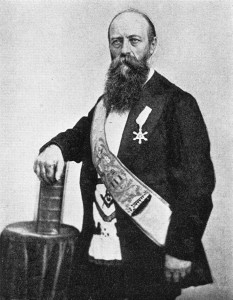
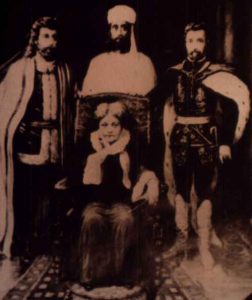

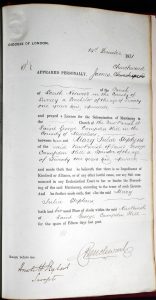
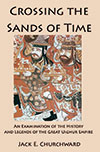
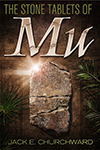
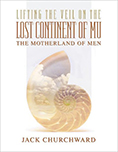



 RSS - Posts
RSS - Posts